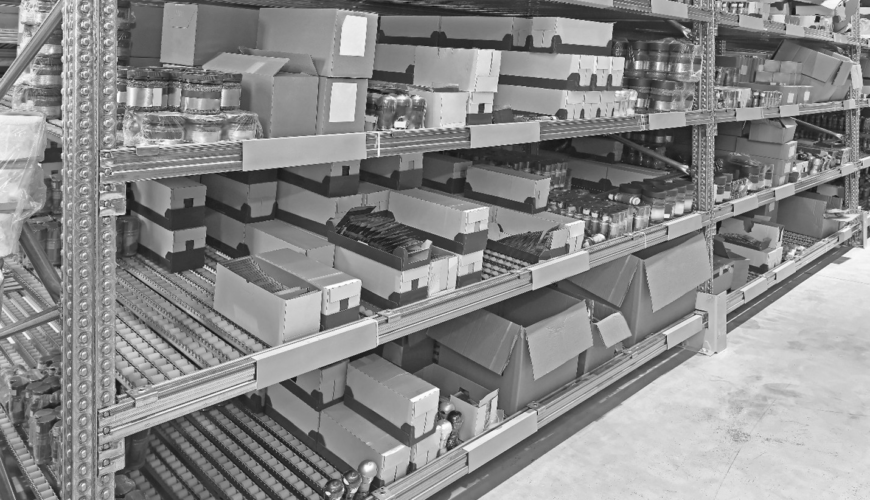Efficient product slotting in a warehouse is critical in optimizing operations and ensuring the smooth flow of goods. Slotting refers to the process of determining where each product or Stock Keeping Unit (SKU) is stored within the warehouse. It’s about finding the ideal location for each SKU based on demand, product characteristics, and storage requirements. Proper slotting can significantly impact order fulfillment efficiency, reduce labor costs, and improve warehouse performance. In this article, we’ll explore the best practices for efficient product slotting and its numerous benefits to your warehouse operations.
The Importance of Efficient Product Slotting
Efficient product slotting is more than just organizing items on shelves; it’s a strategic approach to warehousing. Here are some key reasons why it matters:
Optimized Picking: Placing fast-moving or high-demand SKUs in easily accessible locations minimizes pickers’ travel time, reducing order fulfillment time.
Space Utilization: Proper slotting ensures you use your storage space effectively. It prevents overstocking or understocking of items.
Reduced Labor Costs: Efficient slotting can help reduce labor costs as workers spend less time searching for products, increasing productivity.
Order Accuracy: When products are logically grouped, there’s less room for confusion or errors, resulting in improved order accuracy.
Improved Safety: Slotting also considers the weight and dimensions of items, contributing to safer material handling.
Space Allocation for Special Handling: If your products require specific environmental conditions, like temperature control, efficient slotting ensures these requirements are met.
Now that we understand the significance of efficient product slotting let’s explore the best practices for achieving it.
Best Practices for Efficient Product Slotting
ABC Analysis: Start with an ABC analysis, categorizing SKUs into three groups: A (high-value items with high demand), B (moderate-value items with moderate demand), and C (low-value items with low demand). This categorization helps determine where to slot each SKU for optimal accessibility.
Demand Forecasting: Accurate demand forecasting is crucial for efficient slotting. SKUs with higher forecasted demand should be placed closer to the shipping area for faster access.
Velocity-Based Slotting: Consider the velocity of products, which combines sales volume and frequency. High-velocity items should be placed closer to the picking area.
Product Similarity: Store similar products or SKUs together. This reduces the chances of errors and speeds up picking, as pickers don’t need to switch between different product types frequently.
FIFO/LIFO Principles: First-In-First-Out (FIFO) and Last-In-First-Out (LIFO) principles are essential for certain products, especially perishables. Ensure proper slotting to ensure adherence to these principles.
Weight and Size: Arrange products based on their weight and size, with heavier items at lower levels to prevent overloading shelves and maintain safety.
Slot for Special Handling: If some products require special handling, such as refrigeration or protection from sunlight, allocate specific slots to meet these requirements.
Pallet Racking: If you use pallet racking, place heavier items at the bottom and lighter items on top to maintain stability and safety.
Continuous Review: Regularly reassess your slotting strategy to accommodate changes in demand, product lines, and seasonal variations.
Slotting Software: Invest in slotting software that uses algorithms to optimize slotting based on the factors mentioned above. These tools can help streamline the process and enhance accuracy.
The Benefits of Efficient Product Slotting
Implementing efficient product slotting in your warehouse can lead to several advantages:
Enhanced Productivity: Efficient slotting reduces pickers’ travel time, increasing the number of orders they can process daily. This results in higher productivity and lower labor costs.
Improved Accuracy: Well-organized slotting minimizes the chance of errors and mispicks, leading to higher order accuracy and customer satisfaction.
Space Optimization: Optimal slotting ensures you’re using your storage space effectively. It reduces overstocking and understocking, freeing up valuable space for additional inventory.
Reduced Handling Costs: Items are stored where they are most accessible, which means fewer movements and less wear and tear on equipment. This ultimately reduces handling and maintenance costs.
Better Order Processing: High-demand items are within easy reach, leading to quicker order processing and shorter lead times. This can be a significant competitive advantage.
Inventory Visibility: Efficient slotting provides better visibility into inventory levels. This helps manage restocking schedules and track low-stock items.
Safer Work Environment: Proper slotting considers weight and size, contributing to a safer work environment with fewer accidents.
Improved Customer Service: Faster and more accurate order processing means happier customers who receive their orders on time and without errors.
Challenges in Implementing Efficient Slotting
While the benefits are clear, implementing efficient product slotting is not without its challenges:
Data Accuracy: To make informed slotting decisions, you need accurate data on demand, sales, and product characteristics.
Initial Investment: Implementing efficient slotting practices may require an initial investment in software, equipment, and possibly a warehouse reorganization.
Ongoing Maintenance: Regular reviews and adjustments are necessary to ensure that the slotting strategy remains effective.
Change Management: Employees may need training and time to adapt to the new slotting strategy, and resistance to change can be challenging.
Storage Constraints: Warehouses with limited space may find it challenging to implement slotting practices fully.
Efficient product slotting in a warehouse is a strategic approach to optimizing operations and enhancing overall performance. Implementing best practices such as ABC analysis, demand forecasting, and product similarity grouping can streamline your warehouse operations, improve productivity, and reduce errors. The benefits are clear: increased productivity, reduced labor costs, better order processing, and enhanced customer service. However, data accuracy, initial investment, and change management should be addressed to ensure successful implementation.
In today’s competitive business environment, efficient product slotting can be a game-changer, offering your company a significant edge in order processing speed, accuracy, and customer satisfaction. It’s an investment worth making to ensure the long-term success of your warehouse operations.


